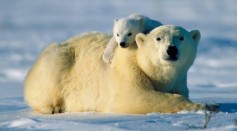science
Sampling the World’s Oceans on a Global Scale Reveals the Complex Relationship between Viruses and Microbes
Paleontologists Unearth Washington’s First Dinosaur: An 80 Million-Year-Old Tyrannosaur
In Japan, Dolphin Controversy Continues Despite International Outcry
Yale Traces the Origins of all Snakes
Oldest Stone Tools Discovered in Kenya, Pushing the Technology Back Some 700,000 Years
Panda Poo Reveals a Mismatched Gut
The Forecast Calls for Chance of Spiders in Australia
New Research Isolates Speech Center in the Human Brain

Zoos Raise Awareness of Endangered Species by Making their Animals Disappear

Research on a Grand Scale: Over 5,000 Scientists Come Together for Record-Breaking Publication
New and Improved Stem Cells Have the Potential to Restore Sight and Heal Damaged Brains
Up From the Depths: The First Warm-Blooded Fish
The Trap-Jaws’ Mighty Mandibles Propel Them from Danger

Drug Testing for Cocaine Gets Personal
Most Popular

How Technology Is Changing the Real Estate Industry?

AI Revolution in Medical Education: Transforming How Healthcare Professionals Learn

Zombie Star Set to Light Up Night Sky: Blaze Star Could Erupt Soon

Exploring Life Beyond Earth: Study Claims Other Planets Could Be Suitable for Alien Life





